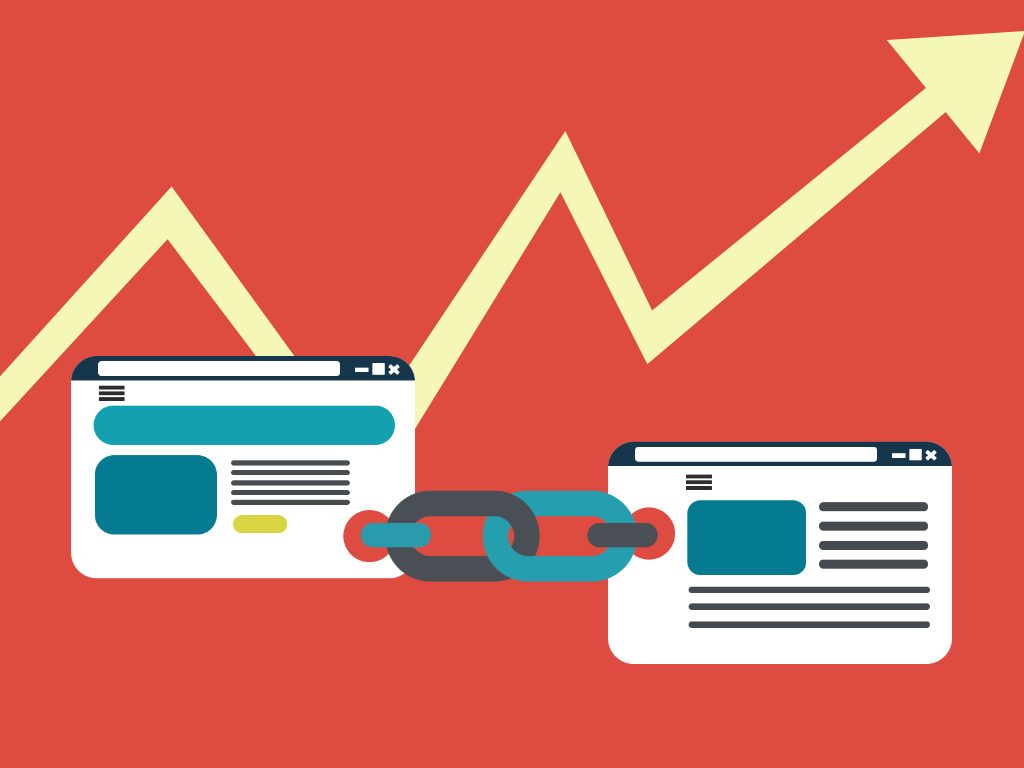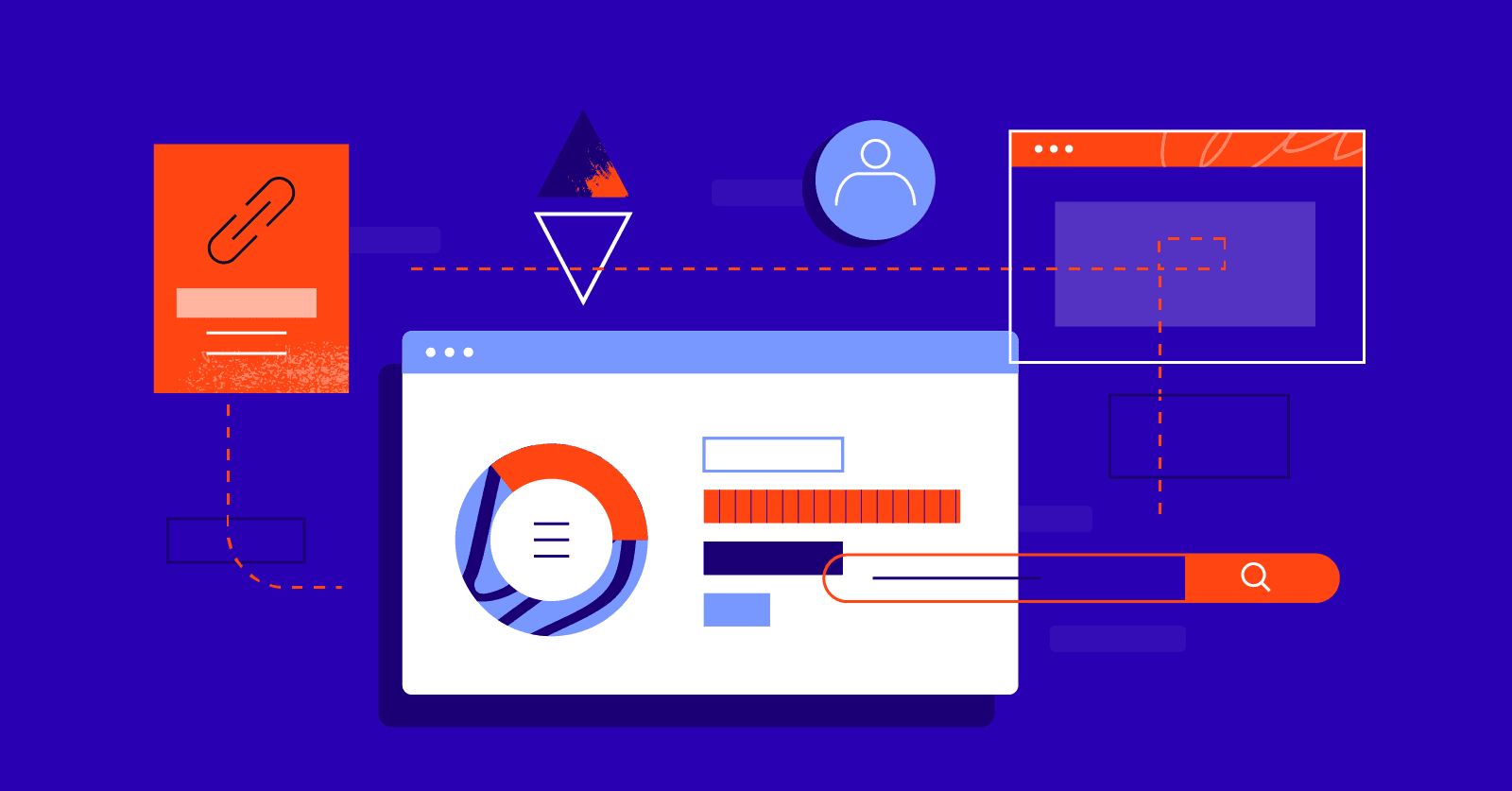What is Link Building?
Link building is a set of SEO strategies that aim to build a network of links to a page to drive traffic and strengthen its authority in search engines.
Links can be either external or internal. In link building terms, the external ones come from other sites, also referred to as backlinks or inbound links.
These links show Google a site’s popularity and authority in the market. The search engine investigates the links leading to the site to see how often it’s cited and the quality of those references.
The more links received from trustworthy and popular sites, the more relevant Google considers the site in its area of expertise.
The algorithm’s intelligence also considers the anchor text, the content around the link, its page position, and other factors that we will take a deeper look at below.
All of these elements impact the indexing and ranking of the linked page.
But link building also includes internal links, those included on the site’s pages. They may target pages on or off the site.
Google also evaluates these links to understand the quality and relevance of a page and, consequently, whether it merits a better ranking in search results.
But, like any decision in the world of SEO, you must first consider the user before worrying about the robot.
For this reason, links are primarily a way to improve the user experience by allowing them to discover additional content while browsing a page.
So, instead of pushing link building artificially, only add links when they make sense to the user. This is how you will gain traffic and authority through this strategy.
Difference between link building and off-page SEO
Although the term off-page SEO is often used interchangeably with link building, their concepts are different:
- Off-page SEO refers to all search engine optimization strategies that are applied beyond a site’s pages.
- Link building involves building a network of links to strengthen pages’ authority.
Off-page SEO encompasses backlinks received from other sites, part of a link building strategy. But it also includes brand mentions without links, an additional ranking factor for Google.

Therefore, link building is only one part of off-page SEO.
In a link building strategy, it’s important to know that you can’t just look beyond your site.
Building a network of links to show Google your relevance involves receiving external links (part of off-page SEO) and adding links on your pages (part of on-page SEO).
So when planning your link building strategy, you need to look at both on-page and off-page SEO.
Keep in mind that one characteristic of on-page SEO is that it’s under your control — you can edit your pages and optimize your internal links to best suit your objectives.
As for off-page SEO, you may be able to influence it, but the decision to link to and mention your site is not directly within your control.
Why are Links Important?
The World Wide Web can be defined as a set of interconnected documents that form a web. Links are responsible for these connections, allowing users to navigate between pages, sites, images, videos, and files.
Search engines rely on this link structure to crawl and rank websites.
In the beginning, search engines were limited to indexing and organizing sites in alphabetical order or directories (arts, sports, news, etc.). Sites had to register to appear in these indexes.
Back when there were relatively few sites, this process was ok. But as the volume of users, websites, content, and searches increased dramatically, search engines needed to improve their algorithms to deliver better search results.
First, search engines removed the need for sites to register. Search providers started to look for sites to include in their indexes. So began the mission to catalog all web pages and make the content available to users in an organized fashion.
To accomplish this task, search engines took advantage of the interconnected structure of the web.
It continues to work this way nowadays: links reveal the web paths for search engine robots, which crawl websites to index new content or updates.
After that, there was no longer any point in ordering sites alphabetically. It was necessary to analyze what pages were offered and whether they had the answers users were looking for.
At this point in the story, Google came to the forefront. The most popular search engine in the world today began its journey with the introduction of an algorithm that revolutionized search: PageRank.
PageRank considered several factors to rank sites in the search index. The algorithm analyzed the page’s content, based on its keywords and its popularity on the internet, measured through its network of links.
The objective was to measure the site’s relevance according to the number of links it received from other sites.
This employed the same logic as in academia: the more citations an author receives, the more authority they have in a given field. So, the more links a site receives, the more relevant it is in its area of expertise.
As a result, links demonstrate the authority of a website. This is also how they became important for search engines and SEO professionals.
Since the introduction of PageRank, Google’s algorithm has continued to evolve.
They soon realized that the number of links was not enough to measure a site’s relevance because it could simply create hundreds of links.
Thus, Google began to consider the diversity and quality of the pages that pointed to backlinks.
The algorithm defined that when high-quality pages from different domains create links, the page they link to receives part of their authority, commonly referred to as link juice.
Thus, the search engine can classify the sites according to their level of authority in the market.
At this point, a site’s reliability (TrustRank), anchor texts, the position of backlinks on the page, and several other factors which we explore below came into play.
A page that links to another shows the web crawler a path to take and the URLs it is sharing its authority with. Therefore, links are essential for crawling and ranking websites on search engines.
How Does Google Evaluate Links?
Google’s algorithm uses a multitude of factors to rank pages, which include link evaluation.
We’ll take a look now at the main factors that Google evaluates in a page’s links profile. This evaluation goes far beyond quantity, also considering the quality, based on various criteria.
Here are the factors you should consider in your link building strategy.
1. Number of links
This was the first factor Google adopted. It formed the basis of PageRank: the more links a site received, the more relevant it was considered. The number of links to a page demonstrated its popularity on the web.
Today, this criterion remains one of the most important factors in evaluating Google links, but it cannot be considered in isolation.
There’s no point in receiving numerous links from sites that are not relevant and reliable. It is necessary to match quantity with the factors that we will see below.
2. Diversity of links
Which has more value: an individual who always says how great you are, or several people who each say once how great you are?
The more people who speak well of you, the more recognition you have in a group.
Google thinks along the same lines. For the search engine, a site reveals stronger authority when it receives links from several different domains. Therefore, link diversity is also included in the evaluation.
3. Link context
Google can also understand the context around the link to gauge if it’s truly relevant.
For starters, Google understands that links from sites that relate to the same field as the target site are more valuable since they are more likely to be relevant to the site’s audience.
Google also evaluates the words that appear around the link, known as co-occurrences. They help the search engine understand the page’s topic and whether the link makes sense within the context.
In addition to the words, Google also evaluates other links that are nearby. If they are also links to quality sites, the page gains more relevance and transmits more link juice.
But if you already have a large number of links, your page tends to receive less link juice, as the site is already transmitting its authority to many other pages.
Besides, the position of links also counts. If it’s part of the main content on the page, there’s a great chance of being inserted with editorial intention, achieving greater value as a result, especially at the beginning of a text.
But, when found in the header or footer, it’s more likely to serve the role of simply generating a backlink and is therefore valued less.
4. Anchor text
The anchor text — the clickable text of the link — also says a lot about the linked page.
It usually provides a keyword or short description of what the user will find on the page when clicking on the link. Therefore, Google uses this factor to index pages.
Also, analyzing the anchor text helps to identify sites trying to deceive the search engine.
Using an exact keyword match in a backlink anchor text is one way to reinforce the authority for that term.
However, when used repeatedly in all backlinks, Google will see this unnatural use as employing black hat techniques. When backlinks are naturally earned, anchor texts tend to be diverse.
5. Reliability
An evolution in Google’s algorithm was TrustRank. When this factor was added to the algorithm, the search engine began to weigh the site’s reliability in its ranking.
So, the closer you are to trusted sites, the more trustworthy you appear to Google, and the more link juice you will receive.
Trusted sites are those that help to build a safer and more relevant web for the user.
To assess reliability, the search algorithm considers factors such as the domain’s age, the use of security certificates, and the quality of content, among other elements.
6. Links from other pages to your website
In link building, you can work with internal and external links. But it’s important to know which one carries more weight in the ranking.
To understand this, consider the following: does Google trust a site based more on what it has to say about itself (internal links) or what other sites say about it (external links)?
What others say is more valuable, so backlinks from other pages tend to weigh more in the search evaluation.
7. Links from your site to its pages
The links you insert into your site are not as valuable backlinks, but they do help show your page hierarchy to Google.
Let’s say you have a promotional marketing company featuring an in-depth blog post that explains what promotional marketing is.

As this publication is central to your business, additional shorter posts can direct links to it, so that Google understands this main post should be at the top of the blog hierarchy.
8. Links from your site to other pages
Besides, links within your pages that lead to external sites also weigh in the ranking.
Google assesses whether you provide links to popular, trusted, and authoritative sites, along the lines of “tell me who you are with and I’ll tell you who you are”.
9. Link gain speed
In the early days of SEO, backlinks were a key tool of black hat techniques — practices used to deceive search engines.
Many websites created link farms or used link buying and selling schemes. Thus, they quickly gained backlinks.
To counter this, Google reinforced its algorithm to identify and penalize this practice. One resource to measure this is how fast your site earns links.
Earning many links in a short period usually indicates a black hat scheme, as a natural link profile has gradual growth.
10. Nofollow vs. dofollow
Another factor that Google evaluates when analyzing links on a page is the nofollow attribute.
When it’s placed in the link code, the web crawler knows not to consider the ranking of the linked page.
This means that nofollow links do not transmit link juice.
By default, all links are do-follow or transmit link juice. When you don’t want to transmit authority through a link, you must insert the nofollow tag.
If you need to cite a dubious website, for example, you can use the nofollow tag to not share your authority with it.
This tag is also commonly used in social media links or blog comment boxes.
Facebook, Instagram, or blog owners want to avoid transmitting their authority to links that any user may insert on a page, mainly because these spaces are often used for spam.












Replies to This Discussion